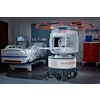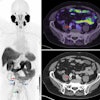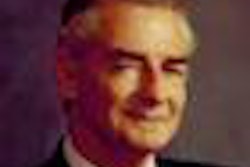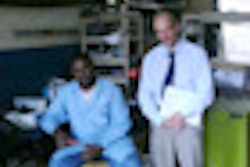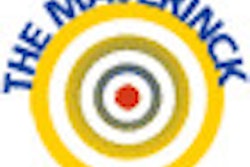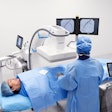
The former head of medical imaging at the World Health Organization (WHO), Dr. Harald Østensen, age 65, has died. He will be remembered for his commitment and dedication to education in developing countries, for getting radiologists and radiographers to work together, and for establishing a global training network and structure.
In his role as coordinator of the WHO's Diagnostic Imaging and Laboratory Technology Branch, Østensen contributed massively to improvements in the quality and safety of diagnostic imaging, particularly basic x-ray and ultrasound examinations in small- and midsized hospitals. Under his initiative and supervision, the WHO created 10 local expert groups in Africa, Southeast Asia, India, and the South Pacific, and ran approximately 80 training courses in the region from the late 1990s until his retirement in 2007.
 Dr. Harald Østensen was a dedicated, respected, and creative pioneer in radiology training and education.
Dr. Harald Østensen was a dedicated, respected, and creative pioneer in radiology training and education.
Prior to joining the WHO, Østensen was managing director of the Nycomed Amersham Intercontinental Continuing Education in Radiology (NICER) Institute courses, which provided continuing education in radiology for countries lacking the range of medical education available in richer countries. Together with Dr. Holger Pettersson, former chair of radiology and deputy medical director at Lund University in Sweden, he persuaded Oslo-based Nycomed Imaging to support the project, and they built up a global program, enlisting expert teachers in radiology from all over the world. NICER organized 50 courses in 22 nations and published a range of multilingual educational materials prior to its closure in the late 1990s, due in part to financial reasons.
Østensen received his medical education and training in Germany and Norway. He worked as a general practitioner and later as a radiologist in hospitals across Norway. He always emphasized basic and applied teaching, and he edited numerous books and brochures that were distributed free of charge.
His efforts were recognized in 2004, when the International Society of Radiology (ISR) bestowed on him its highest honor, the Béclère Medal. The society paid tribute to his efforts to build up a network of worldwide experts, which strengthened WHO's efforts to provide high-quality, relevant, and accessible education to local medical staff in developing nations. It also praised him for boosting collaboration and teamwork among those involved in diagnostic imaging, including doctors, nurses, technicians, and industry.
In 2007, the Round Table Foundation gave him its inaugural Humanitarian Award. "For many years, Harald Østensen has exemplified decency and benevolence by organizing teaching courses and supporting appropriate means of medical imaging, particularly in countries with limited resources," stated the judges.
Østensen did not go happily into retirement because his legacy at the WHO was not secure; his successor as of yet is not in place. The ISR led a campaign to ensure that a new person was appointed, but there was a long period of stalemate and inaction.
"This is of great personal concern to me. I have nourished this baby, and I would like to see it grow up," he told me in an interview in Berlin in May 2007. "The issue of practical training for radiologists and radiographers may come up again at the WHO in another five or 10 years, but by then our efforts will be dead, and the new people would have to make a totally fresh start."
 Østensen (far right), Pettersson (fourth from the left), and WHO staff members are shown here at the Project Team Suva.
Østensen (far right), Pettersson (fourth from the left), and WHO staff members are shown here at the Project Team Suva.Until the end of his life, Østensen urged radiologists in developing countries to remain focused on their everyday working tool: basic x-ray. Many of them are desperate to learn about MRI and CT, but if their hospitals do not have the resources and essential backup services for these modalities, there is no point in them becoming diverted, he said. In some nations in sub-Sahara Africa, there are only one or two CT and MR systems in the whole country, and they are located in private hospitals.
In his retirement, Østensen spent much of his time looking after the garden at his home in Cluny, Southern Burgundy, France, alongside his wife, Monika, a professor of rheumatology at the University of Bern, Switzerland, who specialized in research into pregnancy in patients with rheumatic disease. He continued to be involved in radiological training, particularly in Africa and India, but only in a personal capacity.
"Radiology had never been strongly represented within WHO before, and [Østensen] did a great job with very limited resources. His most important contribution was the concentration on radiological equipment, education, and radiation protection in the least developed parts of the world," said Dr. Hans Ringertz, former head of radiology at the Karolinska Hospital in Stockholm and president of ECR 1997.
"From our earliest meetings, it was clear that Harald's overriding concerns were always those of the patient and how the resources available could best be utilized to improve the health of the population," he continued. "His greatest attribute was in getting health professionals to work as a team and to respect the value of each other's contribution to the care of the patient. He was instrumental in breaking down professional barriers."
At the time of Østensen's retirement in 2007, Otha Linton, executive director of ISR, praised him for always focusing his efforts exactly where efforts in medicine should be focused: trying to help people in practical ways and with simple means.
"He knows the best way to help is to teach and educate," noted Linton. "He has also tried to instill in the minds of people that appropriate use of existing or add-on techniques or technologies is far more valuable than buying or donating high-tech equipment. His mission has taken him tirelessly out into the field to many places of the world of which he has a deep knowledge and understanding of the countries and of their citizens. Whenever I meet him, I think to myself: I have met a humanist."
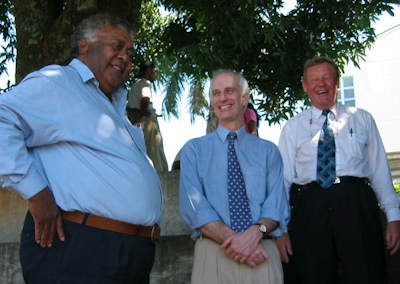 Østensen (right) and Dr. Ian Cowan (center), a radiologist from Christchurch Hospital in New Zealand, share a joke with Dr. Josaia Duvunamoto Taka, who was a consultant radiologist at the Suva Private Hospital from 2001 until his death in 2008. The trio helped establish the WHO Center of Excellence project at the Fiji School of Medicine in 2003. Image courtesy of Rob George, immediate past president of the International Society of Radiographers and Radiological Technologists (ISRRT).
Østensen (right) and Dr. Ian Cowan (center), a radiologist from Christchurch Hospital in New Zealand, share a joke with Dr. Josaia Duvunamoto Taka, who was a consultant radiologist at the Suva Private Hospital from 2001 until his death in 2008. The trio helped establish the WHO Center of Excellence project at the Fiji School of Medicine in 2003. Image courtesy of Rob George, immediate past president of the International Society of Radiographers and Radiological Technologists (ISRRT).